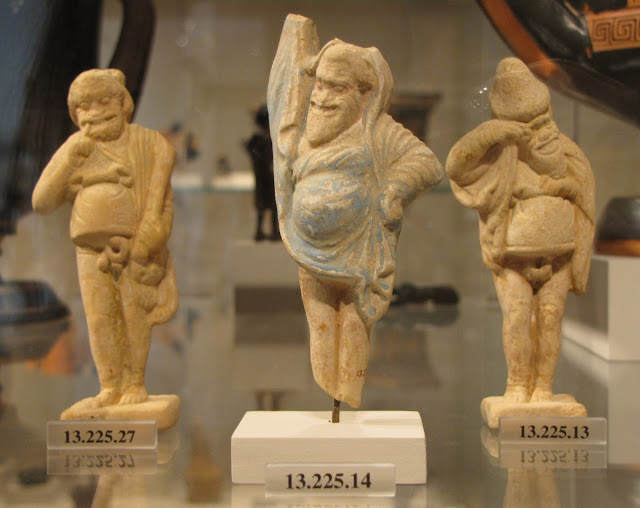Nautilus Cup, Dutch (Utrecht), 1602. Nautilus shell, gilt
silver. Metropolitan Museum of Art.
Saint Sebastian, Austrian (Salzburg),
17th century. Ivory. Metropolitan Museum of Art.
Oracle Figure (Kafigeledjo), Senufo culture, Côte d’Ivoire, 19th – mid-20th century.
Wood, iron, bone, porcupine quills, feathers, commercially woven fiber, organic
material. Metropolitan Museum of Art.
Terracotta Hadra hydra (water jar), Ptolemaic Crete, late 3rd century
BCE. Metropolitan Museum of Art.
The Dead Christ with Angels, Édouard
Manet, 1864. Oil on canvas. Metropolitan Museum of Art.
Amemo (Mask of Humankind), El Anatsui (Ghanaian, b. 1944), 2010. Aluminum
and copper wire. Installation at the
Brooklyn Museum.
Pierced Screen, Mughal India, second half of the 16th
century. Red sandstone. Metropolitan Museum of Art.
Marble funerary altar of Cominia Tyche, Roman, ca. 90–100 CE. Metropolitan Museum of
Art.
Peak (?), El Anatsui (Ghanaian, b.
1944), 2010. Installed at the Brooklyn Museum.
Central Governor, Saul Melman, 2010, installation with gold leaf
and saliva, and Untitled, Matt Mullican, 1997. PS1, Queens.
Church
of Saint Vincent Ferrer
Afrum I (White), James Turrell (American, b. 1943), 1967. Projected light. Solomon
R. Guggenheim Museum.
E 65th St. and Lexington
Line outside
the Rain Room, MoMA, July 20, 2013.
Rain Room, rAndom International (based in London), 2012. Installed in lot beside The Museum of Modern Art, West 54 St.
Ronin, James Turrell (American, b. 1943), 1968. LED light.
Collection of the artist, on display at the Solomon R. Guggenheim Museum.
Gli (Wall), El Anatsui (Ghanaian, b. 1944), 2010. Aluminum and
copper wire. Installation at the Brooklyn Museum.
Detail from a Scene of the Legend of Saint Germain of
Paris and the History of His Relics, Île-de-France, Paris, ca. 1245–47. Pot-metal
and colorless glass with vitreous paint. The Cloisters.
Aten Reign, James Turrell (American, b. 1943), 2013.
Rotunda, Solomon R. Guggenheim Museum.
Twisted Face Mask, Veracruz (Mexico),
600–900. Ceramic and pigment. Metropolitan Museum of Art.
Reclining Nude, Amedeo Modigliani (Italian, 1884–1920), 1917.
Oil on canvas. Metropolitan Museum of Art.
Two Hands, Claudette Schreuders (b.
1973, Pretoria, South Africa), 2010. Jelutong wood, enamel, oil paint.
Metropolitan Museum of Art.
Terracotta comic actors, Greek, late 5th–early
4th century BCE. Metropolitan Museum of Art.
Christ Presenting the Keys to Saint Peter and
the Law to Saint Paul,
Germany, Westphalia, 1150–1200. Elephant ivory. The Cloisters.
The Third-Class Carriage, Honoré
Daumier (French, 1808–79), ca. 1862–64. Oil on canvas. Metropolitan Museum of Art.
Atrium
of the Greek and Roman Galleries, Metropolitan Museum of Art.
Upper
East Side, Manhattan.
Pair
of ewers with wild men, Nuremberg (?), ca. 1500. Gilt silver, enamel, and
paint. The Cloisters.
House
exterior, Harlem, July 21, 2013.
Cuxa
Cloister, The Cloisters, Fort Tryon Park.
Pool,
Meg Webster, 2013. Installed at PS1, Queens.
Commemorative monument, Mayan
(Guatemala), first quarter of the 8th century. Limestone with traces
of paint. Metropolitan Museum of Art, on loan from the Guatemalan government.
Eagle Attacking a Mountain Lion, Kawanabe Kyōsai (Japanese, 1831–89), 1885. Hanging scroll; ink and color on
paper. Metropolitan Museum of Art.
Roundel with silver stain.
The Cloisters.
Handle in the Shape of a Dragon’s Head, Eastern Han dynasty (China), 1st–2nd
century. Gilded bronze with traces of red pigment. Metropolitan Museum of Art.
Christ Child with an Apple, workshop of
Michel Erhart (Ulm, Germany), ca. 1470–80. Willow with original paint and
traces of gilding.
Space
Womb, Long Island City, Queens.
Colony,
a77 (Argentinian). Installed in PS1, Queens.
Somewhere
in Manhattan.
5
Pointz, Long Island City, Queens, as seen from the 7 train.
Tomb of Ermengol VII, Count of Urgell, Catalan, Lerida, ca. 1300–50. Limestone with
traces of paint. The Cloisters.
Terracotta statuette of a grotesque man with a
shield,
Greek, 2nd–1st century BCE. Metropolitan Museum of Art.
Saint Roch, Normandy, France, early 16th
century. Oak with paint and gilding. The Cloisters.
Beaker with Apes, South Lowlands,
probably Burgundian Territories, ca. 1425–50. Silver, silver gilt, and painted
enamel. The Cloisters.
Three Apes Assembling a Trestle Table,
Germany (?), 1480–1500. Colorless glass with vitreous paint and silver stain.
The Cloisters.
Ink Splash, El Anatsui (Ghanaian, b. 1944), 2010. Aluminum
and copper wire. Installation at the Brooklyn Museum.
5
Pointz, Long Island City, Queens.
Langon
Chapel, The Cloisters, Fort Tryon Park.
All photographs by Renée DeVoe Mertz, July 19–21, 2013.


































































